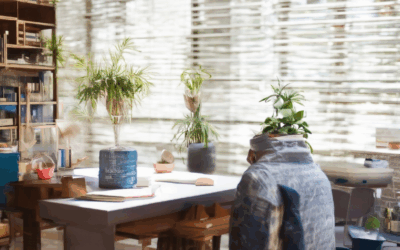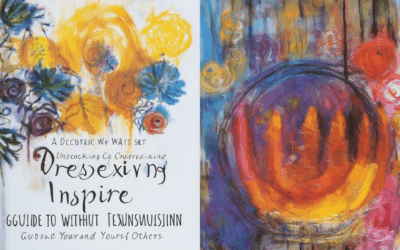Nurturing the creative mind is a powerful journey that unlocks infinite potential, fostering innovation, and driving personal and professional growth. Whether you’re an artist, entrepreneur, or anyone seeking to harness their full potential, activating your creative mind is essential for thriving in today’s fast-paced world. This guide explores the strategies, techniques, and mindset shifts needed to nurture your creativity, ensuring it flourishes in every aspect of life. From understanding the core concepts of creativity to discovering actionable tips, we delve into what it means to nurture your creative mind, the importance of persistence, playfulness, and mindfulness, and how these elements converge to fuel innovative thinking. By embracing the right approaches and leveraging the power of curiosity, open-mindedness, and structured practice, you can unlock your creative potential and create meaningful impact.
Key Takeaways
- Activate Creativity Through a Stimulating Environment: Cultivate creativity by surrounding yourself with diverse cultures, exploring new hobbies, and engaging in creative activities.
- Fuel Innovation With a Growth Mindset: Embrace curiosity, view mistakes as learning opportunities, and experiment freely to nurture your creative potential.
- Collaborate for Diverse Perspectives: Partner with individuals from varied backgrounds to spark innovative solutions and refine your ideas through constructive feedback.
- Boost Creativity With Physical Health: Incorporate exercise and mindfulness practices to improve focus and reduce stress, enhancing your ability to generate ideas.
- Lifelong Learning Drives Creativity: Pursue diverse disciplines and maintain intellectual curiosity to keep your mind sharp and open to new possibilities.
- Balance Technology and Real-World Experiences: Use digital tools wisely while ensuring real-world interactions enrich your creative development.
- Cultivate Personality Traits for Creativity: Develop traits like dedication, independence, passion for originality, and flexibility to enhance your creative process.
By integrating these strategies, you can unlock your creative potential and foster innovation in your personal and professional life. Explore more creative insights on Patrick Mettraux’s blog.

Nurturing Creativity: A Comprehensive Guide
To nurture creativity, it’s essential to create an environment that fosters innovation and imagination. Here’s how you can effectively cultivate a space where creativity thrives:
- Encourage Exploration:** Provide opportunities for unstructured play and experimentation. This allows individuals to explore diverse ideas and solutions.
- Cultivate Curiosity:** Ask open-ended questions and spark curiosity through exploration and discovery. This helps develop a mindset geared towards innovation.
- Promote Collaboration:** Foster teamwork to inspire new perspectives. Collaborative projects often lead to creative solutions that individual efforts might miss.
- Offer Resources:** Ensure access to a variety of tools, materials, and media. This gives individuals the means to bring their ideas to life effectively.
- Provide Feedback:** Offer constructive criticism to help individuals refine their ideas and approaches while maintaining a supportive atmosphere.
- Create a Positive Environment:** Design spaces that are clean, organized, and filled with natural light to reduce stress and enhance focus.
- Support Well-Being:** Encourage self-care practices like rest, mindfulness, and physical activity to prevent burnout and sustain creative energy.
What are the 5 P’s of creativity?
The 5 Ps of creativity are a model used to describe the key components that contribute to the creative process. These elements work together to foster innovation and inspire creative solutions. Here’s a breakdown of each:
- Person: This refers to the individual involved in the creation process. Personality traits, experiences, and mindset significantly influence creativity. Creative individuals often possess traits like curiosity, open-mindedness, and a willingness to explore new ideas.
- Process: This encompasses the methods or techniques used to generate ideas. Techniques such as brainstorming, mind mapping, or using digital tools can enhance the creative process. Different approaches may resonate more with individual creators.
- Product: The outcome or result of the creative effort. This could be an invention, artwork, written piece, or any tangible manifestation of creativity. The product reflects the creativity and effort invested.
- Place: The environment or setting where creativity occurs. Research shows that location greatly impacts creativity. Inspirational settings, such as vibrant workplaces or serene spaces, can stimulate creative thinking.
- Physiology: This element focuses on biological factors influencing creativity. Aspects like sleep, nutrition, stress levels, and brain function affect cognitive abilities and creativity. Maintaining a healthy lifestyle can enhance creative potential.
By understanding and leveraging these five components, individuals can unlock their creative potential and drive innovation in various fields.

How to Activate Your Creative Mind
To unlock and enhance your creative potential, consider implementing these strategies:
- Cultivate Curiosity and Exploration
- Approach life with curiosity. Ask questions, explore new experiences, and stay open-minded. Engage in activities that spark your interest, whether it’s art, music, or learning something new.
-
Promote Mindfulness and Reflection
- Practice mindfulness to clear your mind. Techniques like meditation or journaling can help reduce stress and increase focus, allowing creativity to flow naturally.
-
Embrace a Growth Mindset
- Believe that your abilities can develop over time. Embrace challenges as opportunities to learn and grow, which fosters resilience and innovation.
-
Set Clear Goals and Priorities
- Define your objectives and allocate time to work on creative projects. Having a structured approach helps channel your energy effectively.
-
Surround Yourself with Inspiration
- Create an environment rich with creative stimuli. Visit museums, watch documentaries, or read books that inspire your passions.
-
Practice Regular Creativity
- Dedicate consistent time to your creative pursuits. Even short periods can accumulate into significant progress over time.
-
Stay Healthy and Balanced
- Maintain physical health through exercise, proper nutrition, and sufficient sleep. These factors significantly influence cognitive function and creativity.
-
Learn from Others and Iterate
- Study successful creators and adapt their techniques to your own style. Iteration is key to refining your ideas and achieving breakthroughs.
-
Take Smart Risks
- Step out of your comfort zone to explore new creative territories. Risk-taking can lead to unexpected innovations and growth.
-
Document and Reflect
- Keep a creative journal to track your ideas and progress. Reviewing your work helps identify patterns and areas for improvement.
By consistently applying these strategies, you can unlock your creative potential and find new ways to express yourself. Remember, creativity is a journey that requires patience, dedication, and a willingness to evolve. https://patrickmettraux.com/

Nurturing Creativity: A Comprehensive Overview
Understanding the concept of nurturing creativity involves recognizing it as a dynamic process that can be cultivated through intentional efforts and supportive environments. Creativity, often described as the generation of novel ideas or solutions, is not merely an innate talent but can be developed through various strategies and practices.
The Role of Environment
A stimulating environment significantly influences creativity. Exposure to diverse cultures, travel experiences, and varied hobbies can broaden perspectives, fostering innovative thinking. Engaging in creative activities like art or music further enhances these skills.
Mindset and Approach
Approaching problems with curiosity and openness to new ideas is crucial. A growth mindset, where mistakes are viewed as learning opportunities, encourages experimentation and creativity. Designating time for brainstorming and embracing failure as a stepping stone can further nurture this process.
Social and Collaborative Factors
Collaboration with individuals from diverse backgrounds can introduce new perspectives, leading to creative solutions. Constructive feedback that builds rather than criticizes helps refine ideas, promoting a culture of innovation.
Physical and Mental Well-being
Exercise and mindfulness practices like meditation can boost creativity by improving blood flow and reducing stress. These activities contribute to a focused and creative state, essential for idea generation.
Educational and Intellectual Pursuits
Exposure to various disciplines, such as combining biology with art, encourages innovative thinking. Lifelong learning and intellectual curiosity keep the mind sharp and open to new possibilities.
Examples and Case Studies
Companies like Google and IDEO exemplify successful creativity nurturing through flexible workspaces, collaborative teams, and embracing failure as a learning tool, contributing to their innovative cultures.
Research and Evidence
Studies suggest that environments with access to nature and variety stimulate creativity. Programs combining creativity training with other developmental areas show positive outcomes, supported by empirical research.
Balancing Technology and Real-World Experience
Digital platforms offer new creative expression tools, but balancing screen time with real-world experiences maintains a well-rounded approach to creativity, enriching the overall development.
Conclusion
Nurturing creativity is a multifaceted endeavor requiring attention to environmental, mental, social, and educational dimensions. By cultivating these areas, individuals and organizations can unlock and enhance their creative potential, driving innovation and personal growth.
Five Strategies for Nurturing Creativity Among Learners
Nurturing creativity among learners is essential for fostering innovation and critical thinking. Here are five proven strategies to help cultivate and encourage creativity:
- Encourage Independent Thinking
- Allow students to explore diverse ideas and perspectives.
- Provide opportunities for self-directed learning and exploration.
- Foster a growth mindset where mistakes are seen as stepping stones to success.
- Create a Supportive Environment
- Offer a safe space where students feel comfortable expressing themselves.
- Use visual and interactive tools to engage different learning styles.
- Implement flexible seating arrangements to reduce stress and anxiety.
- Promote Collaboration
- Facilitate group discussions and collaborative projects.
- Encourage peer feedback and diverse perspectives.
- Organize brainstorming sessions to generate innovative ideas.
- Integrate Technology
- Utilize digital tools like mind-mapping software and virtual collaboration platforms.
- Provide access to online resources and creative expression platforms.
- Teach students how to use technology as a creative problem-solving tool.
- Sponsor Extracurricular Activities
- Offer clubs and programs outside of traditional classroom settings.
- Support access to arts, sports, and other creative outlets.
- Connect learning experiences to real-world applications and challenges.
By implementing these strategies, educators can create an environment where creativity thrives, leading to more engaged and innovative learners.

What are four personality traits that support creativity and the creative process?
Creativity thrives on certain personality traits that enable individuals to approach problems innovatively and produce high-quality work. Research has identified four key personality traits that consistently predict creativity:
- Devotion to Work : Individuals who are highly committed to their work often exhibit greater creativity. They are driven by a strong internal motivation and are willing to invest significant time and effort into their projects.
- Independence : Creative thinking requires the ability to work autonomously and challenge conventional wisdom. Those who are self-reliant and confident in their abilities tend to generate unique ideas and solutions.
- Drive for Originality : Creativity is often fueled by a relentless pursuit of uniqueness. People who are passionate about creating something new and different are more likely to push boundaries and experiment with innovative approaches.
- Flexibility : Creativity demands adaptability. Flexible thinkers can embrace change and explore diverse perspectives, allowing them to see opportunities where others might see obstacles.
These traits, when developed and nurtured, can significantly enhance one’s capacity for creativity and innovation. By cultivating these characteristics, individuals can unlock their potential and contribute meaningfully to their field.
For further exploration of creativity and its supporting traits, visit Patrick Mettraux’s blog , a resource dedicated to inspiring creative expression and fostering imagination.
Conclusion
The combination of devotion to work, independence, drive for originality, and flexibility creates a robust foundation for creativity. These personality traits not only facilitate the creative process but also contribute to long-term success in various creative endeavors.





0 Comments